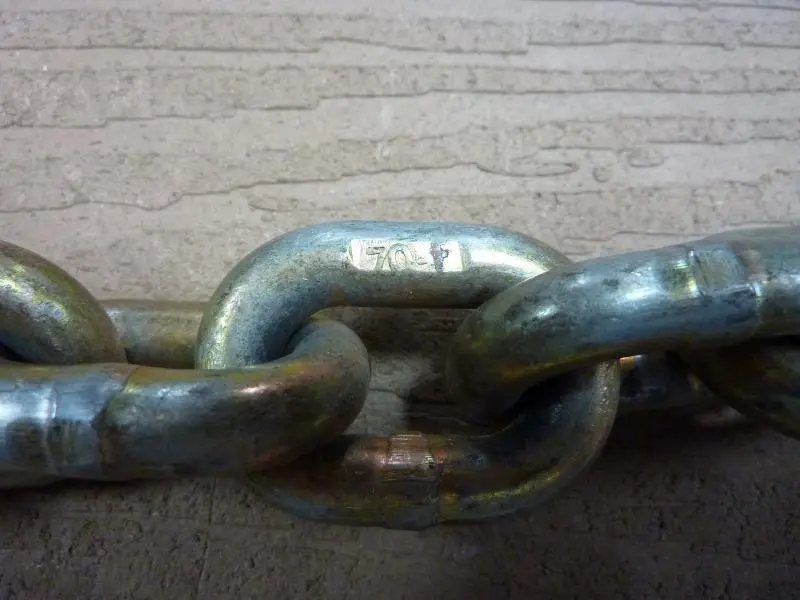Several days ago I talked with a commercial Calif Highway Patrol officer about the regulations for using chains as tiedowns for tractors. The days of putting one chain across the hitch and one in the front of the tractor are over.
Equipment has to be secured with four seperate points of contact. The weight of the equipment determines the class of chain, hooks, and binders necessary. I will use the ratings for 3/8 chain in the following examples.
The working load of a tractor is 1/2 of its weight. So a 14,000 lb tractors needs to be secured with 4 tiedowns that add up to more than 7000 aggregate lbs. The grade 70 transport chain that I have is only marked on one link every foot. Its rating is 6600lbs. But you only get to use 1/2 of that rating if the tiedown goes from the trailer to the tractor. There logic is that it has 2 points of contact so therefore divide by 2. Four grade 70 chains would then have the ability to hold a working load of 13,200 lbs (4X3300). This means that this 4 chain tiedowns could theoretically hold a 26,400 lb tractor. There may be some additional requirments that are necessay for a tractor this heavy that I am not aware of. You must also have hooks that are 70 rated and binders that are equal to your chain rating. The tiedown is only as good as its weakest link.
One interesting difference: A chain that goes over or thru a tractor and is hooked on the trailer on both ends gets to use the full chain rating in the aggregate load calculations but still only counts as one tiedown.
Unmarked 3/8 chain is considered grade 30 which has a rating of 2650 lbs. You could tiedown a 10,600 lb tractor with 4 tiedowns. 2650/2X4tiedowns = 5300 lbs working load X 2 = 10600 lbs.
I offer no guarantee my interpretation is correct and I would like to hear from some frequent and commercial haulers to correct or verify my examples. G

